In the previous blog posts, “Kettlebell Deadlifts: Strengthen Your Back and Get Rid of Pain” and “Want to Move Better and Feel Stronger? Master the Hip Hinge,” we covered proper hinge technique and provided the foundation for deadlifting. To take full advantage of this exercise a barbell is required. The barbell deadlift allows the individual to progressively increase weight, thus increasing strength. For true strength gains and muscle building (hypertrophy) we need to lift weights at 60-80% of our 1 rep max (4). Additionally, the increased weight lifted will stimulate larger motor units and enhance total body muscular activation (3). By training the deadlift you can be more efficient in your exercise program and rehabilitation by performing less exercise while still seeing results! Now let’s take a dive into proper barbell deadlift form and common faults that need to be addressed to realize the true benefits of this full body exercise.
First, we need to look at the set up. This is going to be like the kettlebell lift but with a couple different steps. Make sure that when you stand over the bar that your feet are shoulder width apart and the tops of your feet/shoelaces are directly under the bar. Not too close to your shins and not too far out in front off your toes.
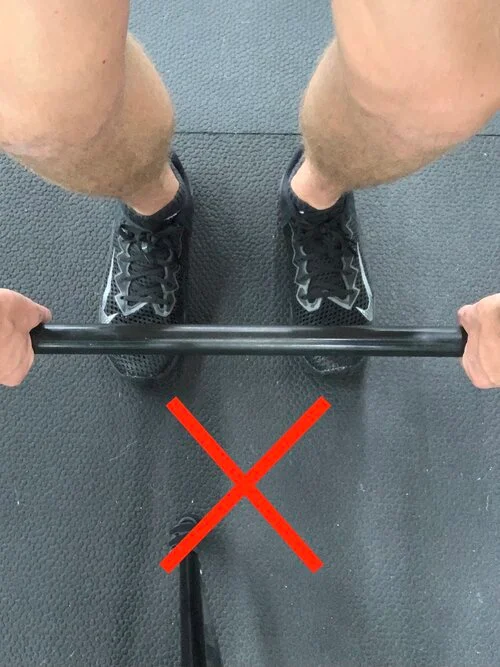
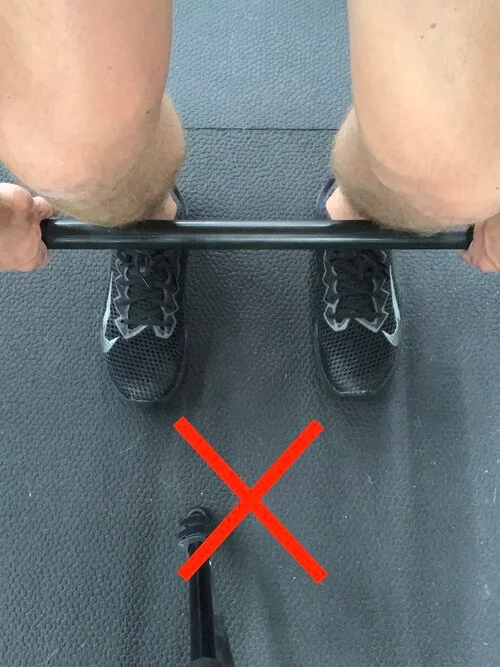
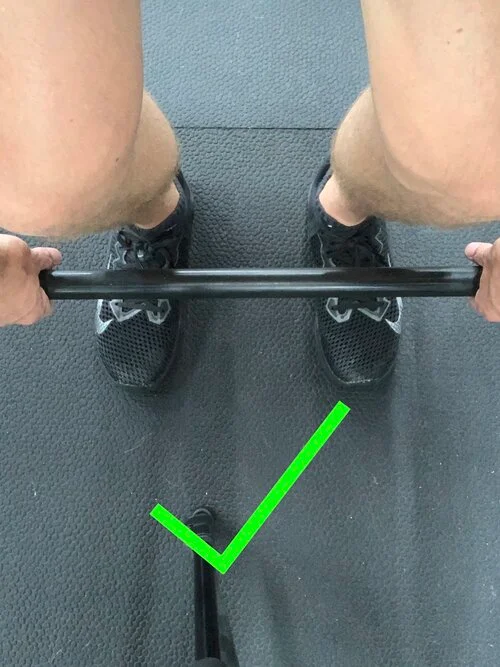
Next, hinge at your hips to bend down and grab the bar. You can utilize the Pronated Grip, Alternating Grip or Hook Grip based on your comfort and preference. Also, be sure to have your arms just outside your knees to produce the best leverage for the lift.
Pronated Grip
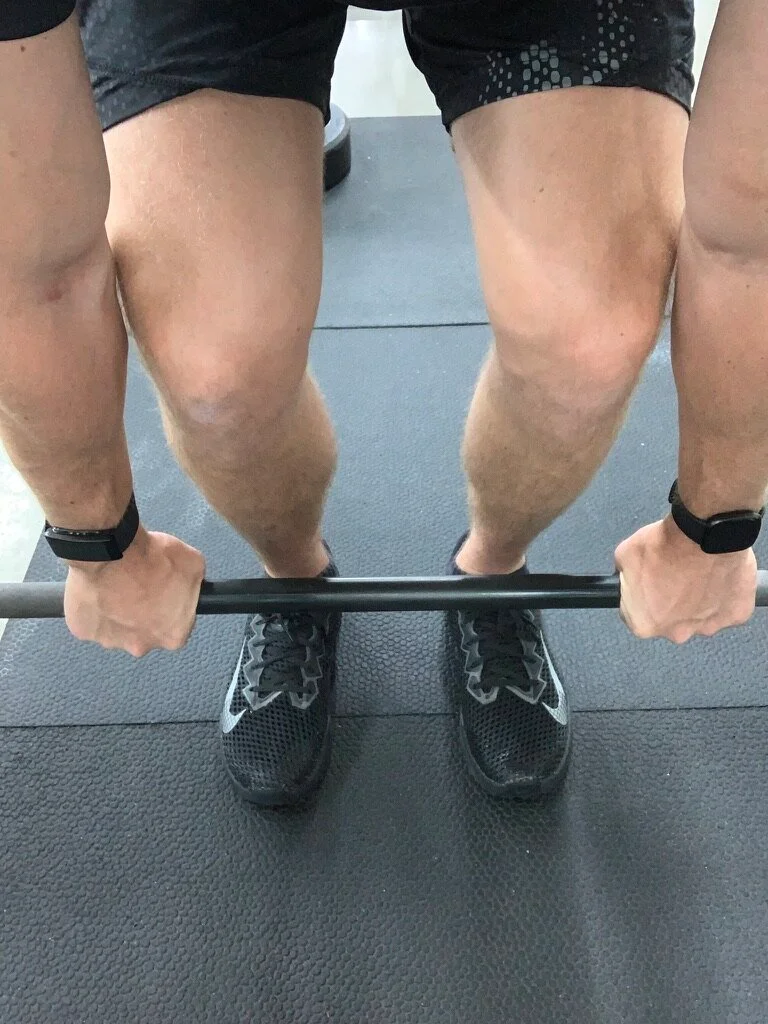
Alternating Grip
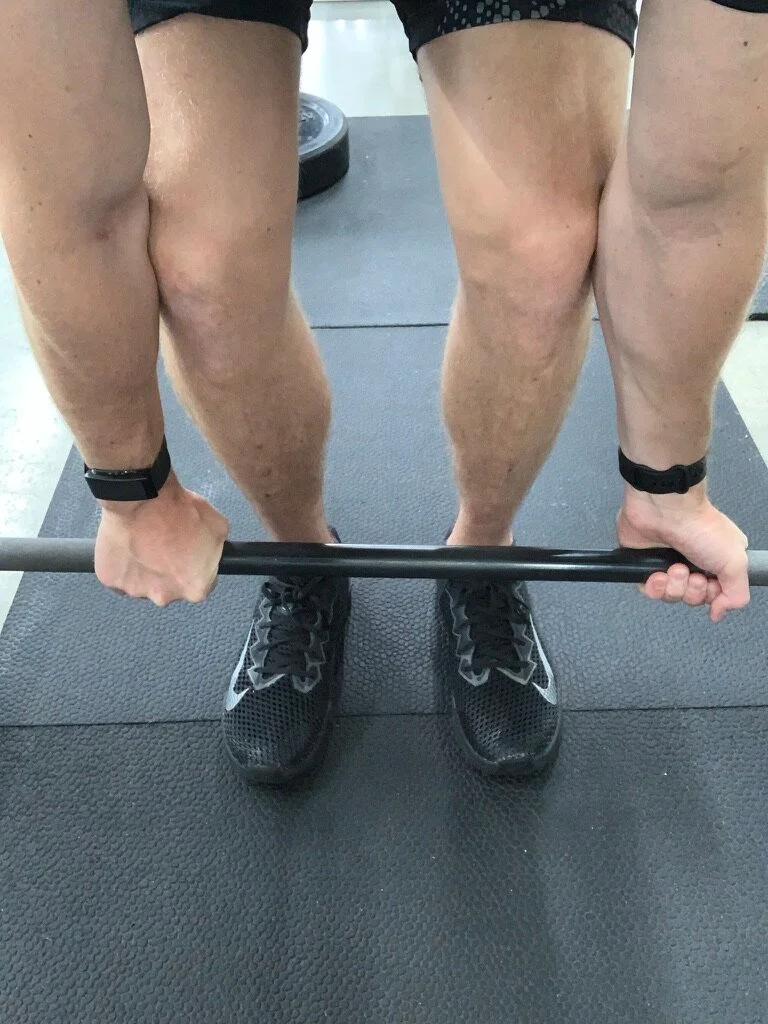
Hook Grip
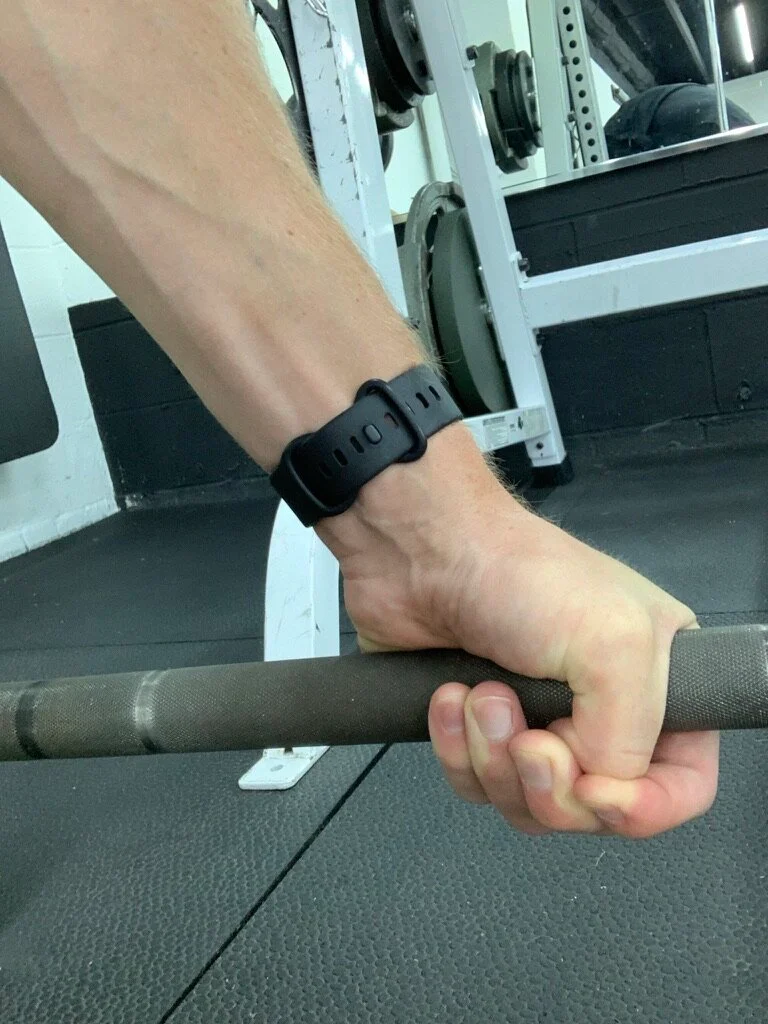
Now that you are set up let’s begin the lift. For the deadlift we need to create full body tension before the lift to create a rigid lever from our torso and hips. The tension created minimizes many faulty patterns, especially that of excessive lower back rounding (more on that later).
First, we must engage the latissimus dorsi by “taking the slack out of the bar.” Imagine trying to bend the bar in half without lifting it from the ground. You should hear a “clink” from the ends of the barbell engaging with the weights.
Once you’ve “taken the slack out” of the bar, it’s time to brace your core. We want to create stabilization of the spine through increasing intra-abdominal pressure. To do this tighten your abdominal muscles by “bearing down.” You are trying to push your abdominals outward in all directions but not up.
deansomerset.com/hypopresive-breathing-fundamentals-review/breath-control-revised.png
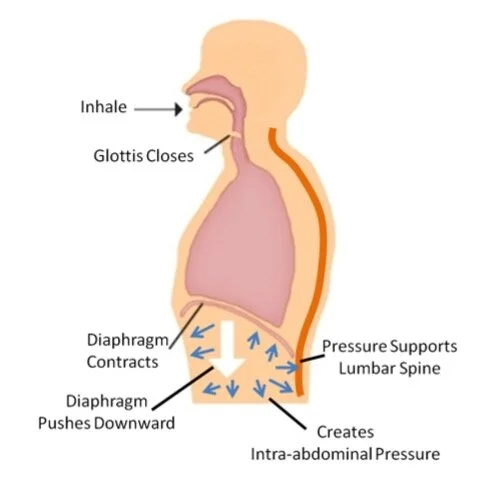
If you are having trouble with this try placing both hands on top of your hip bones. Brace your core. You should feel your outer abdominal muscles (obliques) press into your hands.
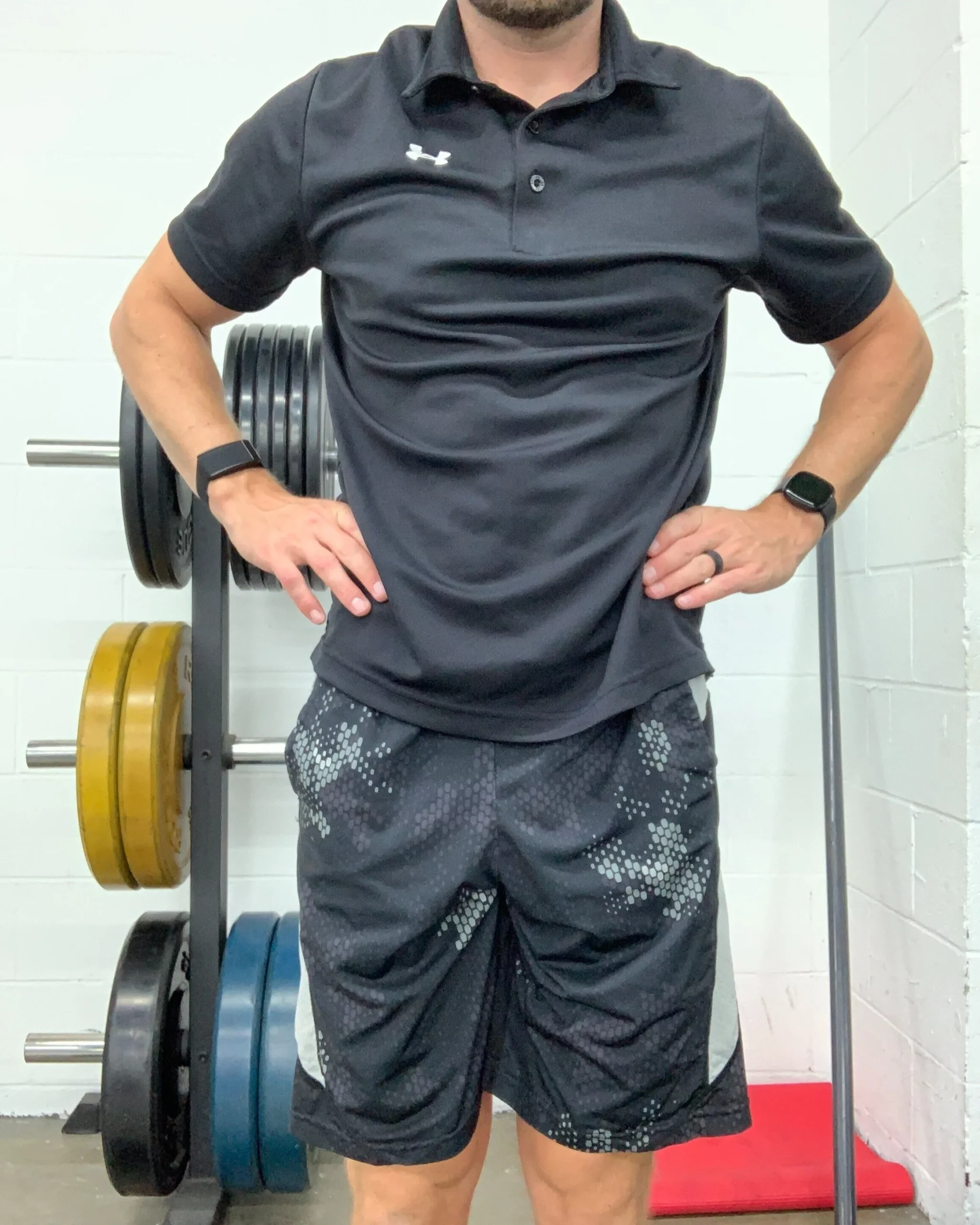
Okay, so you are locked out with your core braced. Your body is tensioned and ready for the lift. Remember, this a PUSH movement not a pull!
Drive your feet through the ground while maintaining your core brace. Squeeze your glutes and feel the tension in your hamstrings as you hinge upwards.
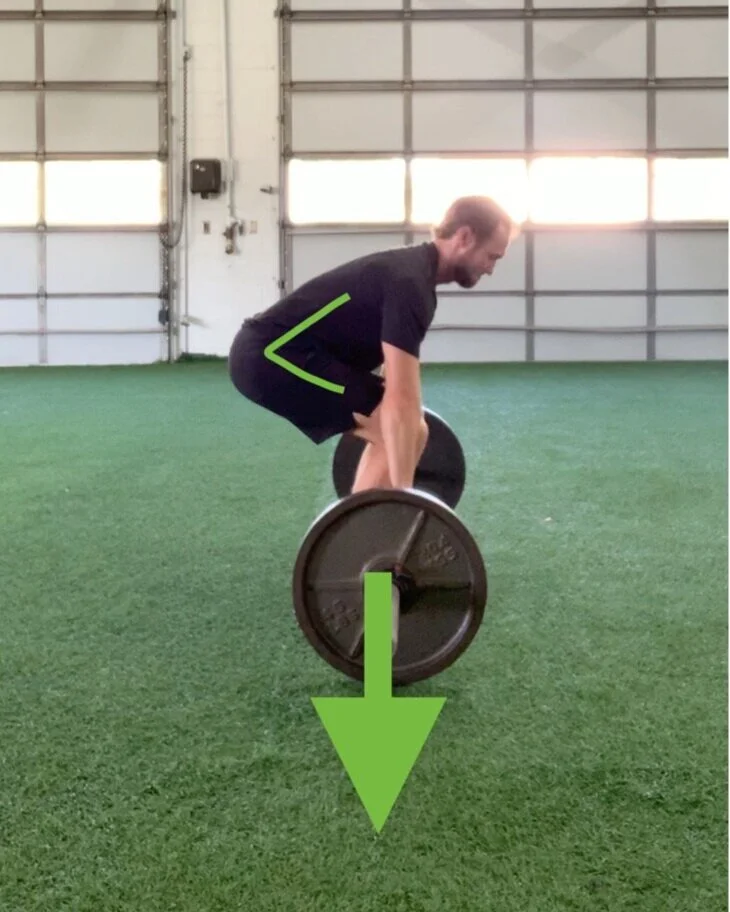
Now you’ve made it to the top part of the lift. Breathe out and re-establish your core brace. Unlock your hips and hinge down while keeping your back flat and bar close to your shins.
That’s it! You deadlifted some real weight!
As previously stated in the other blog posts; Practice, Practice, Practice! It is common to have technical errors when starting this lift but addressing them early will prevent injury and training plateaus. Below are a couple of the most frequently experienced errors when performing the barbell deadlift and tips to correct them.
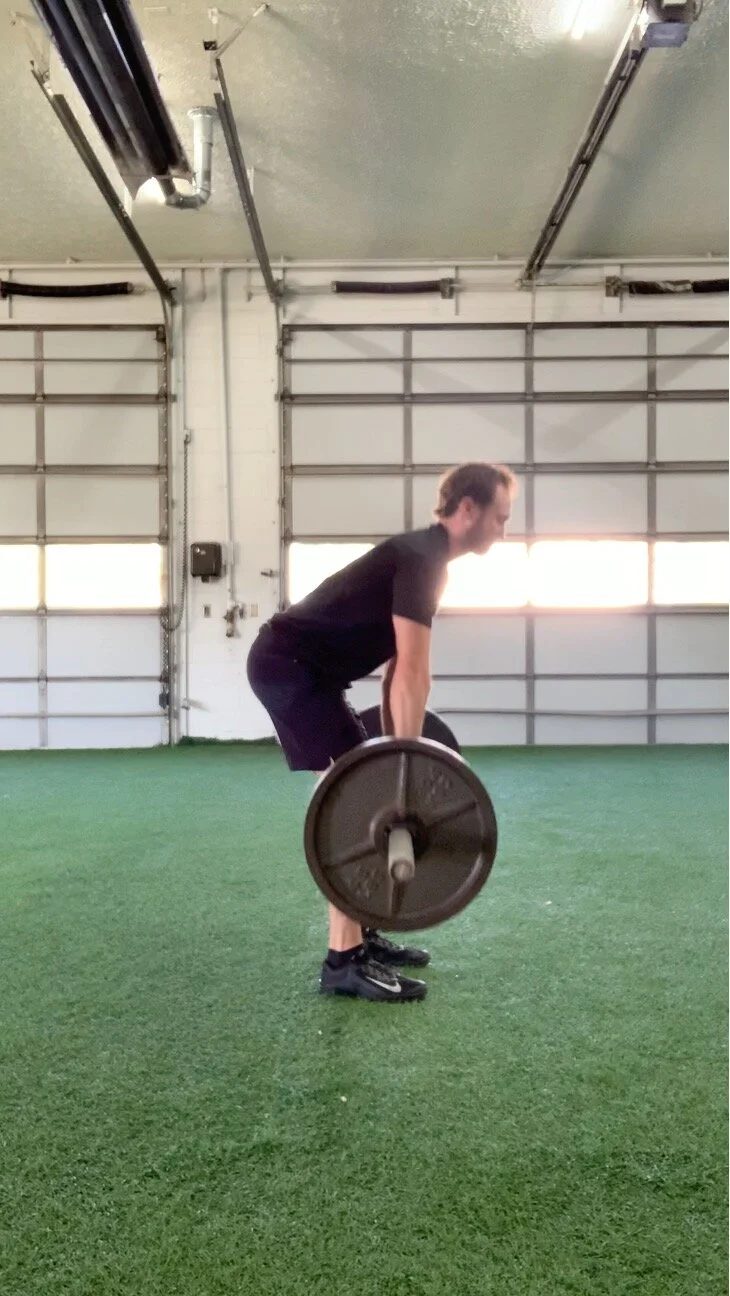
Rounding Low Back
Lumbar spine flexion during heavy lifting induces significant load to the spinal discs and vertebrae (2). This typically occurs with improper bracing technique, pulling the weight instead of pushing through the ground and lifting too much weight than cannot be controlled. If this fault occurs drop down on the weight, perfect your form and gradually increase resistance.
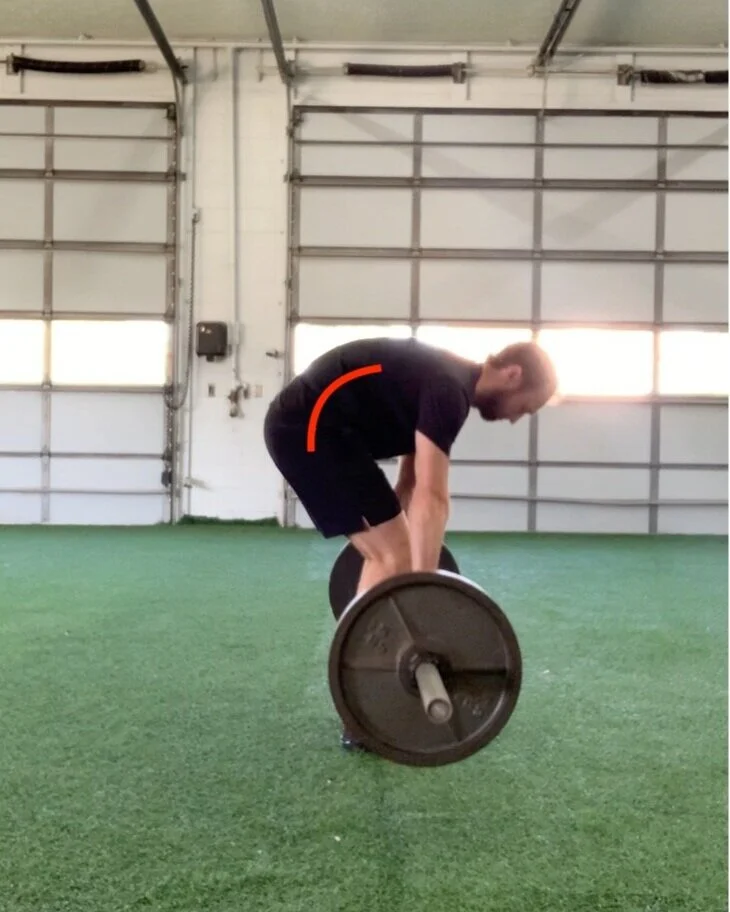
Hips Rise Early
The hips and lumbar spine should elevate together as the weight is lifted from the ground. If the hips “shoot up” early the hamstrings are engaged but the gluteal muscles cannot contribute adequately to the lift. With decreased gluteal activation the lumbar spinal extensors must take over to hinge the torso around the hips. This can lead to lumbar rounding and increased stress on the spine. To correct this fault focus on bracing your core prior to the lift and driving your feet firmly through the earth to engage the core and gluteal muscles together.
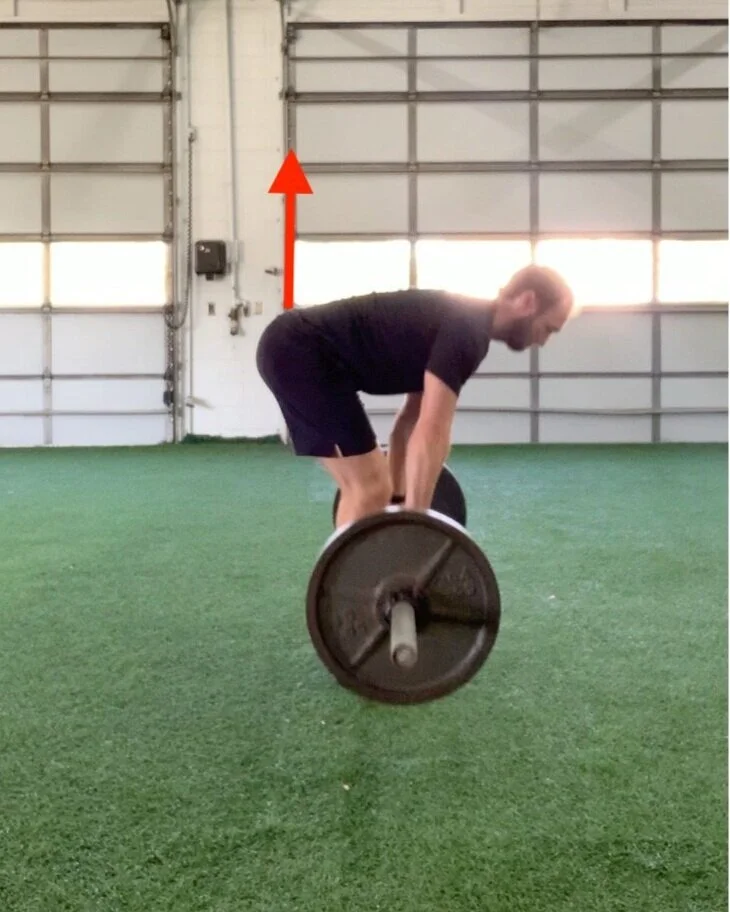
Bar Too Far From Body
The bar should travel closely to your shins as the weight is lifted. Some lifters even have minor scraps on their shins due to the bar path. If the bar travels too far from the body the torque required by the lumbar extensors to move the weight increases, thus increasing strain on the lumbar spine. Also, be sure to have relatively vertical shin position as the bar travels upward. The more perpendicular the shin, the more of a squatted position you are in. This leads us to the last fault.
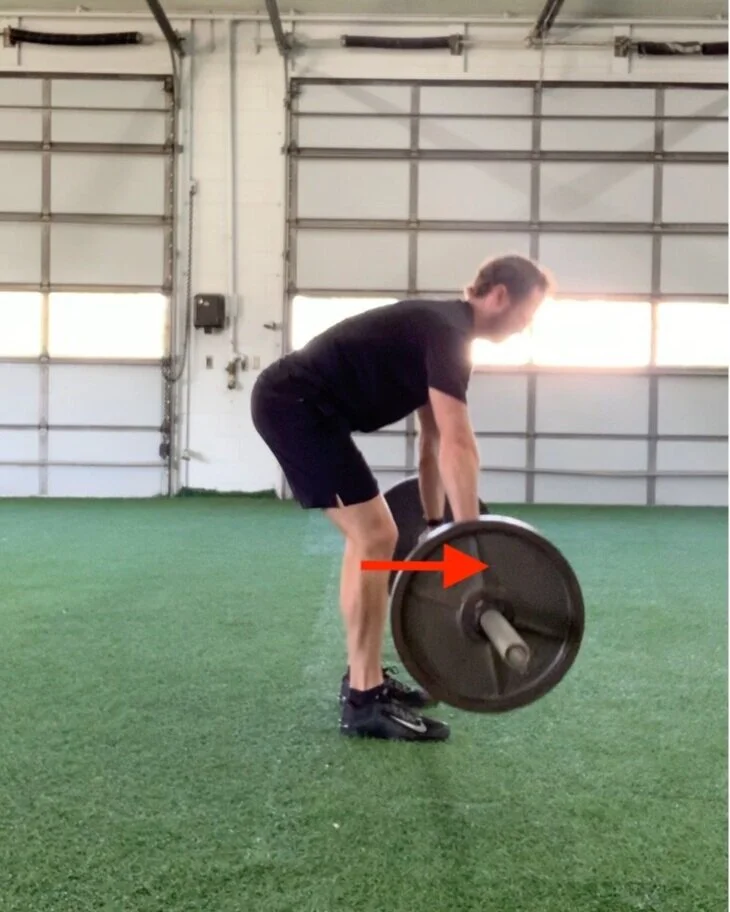
Squatting the Deadlift
As previously mentioned, we want to have a relatively vertical shin position during the ascent and descent of the deadlift. If you are in a squatted position to start, you will be required to push the bar away from your body to clear your knees during the lowering phase. The same strain placed on the low back when we lift the bar too far from our body can also be seen when we must push the bar forward around our knees. To fix this problem, grasp the barbell with a shoulder width stance. Before lifting the weight, slightly raise your hips. You should feel slight tension in your hamstrings. You now have pre-tensioned your hamstrings, locked in your spinal position, and created a more vertical shin position.
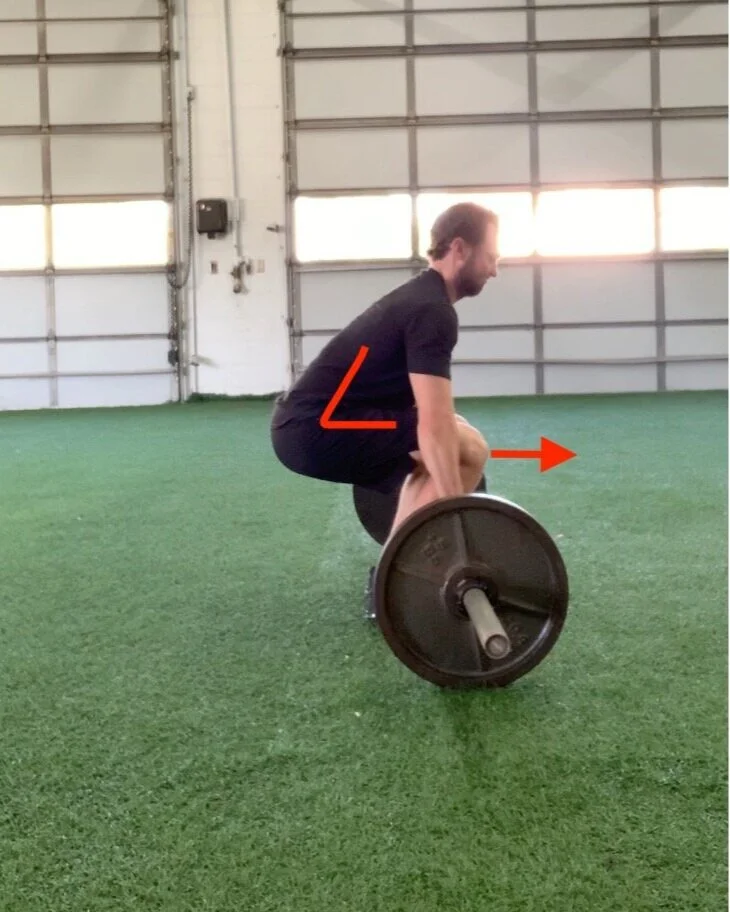
Remember deadlifts are not bad for your back, but the way you deadlift might be. Those that have low back pain have been shown to display decreased lumbar extensor strength and endurance compared to those not in pain (1,6). Deadlifts prove to increase activity of trunk musculature and provide an adequate stimulus for muscle strength and hypertrophy which make them a useful rehabilitation intervention (7). Whether you are looking to improve performance, total body strength or get out of low back pain, the deadlift gives you a great bang for your buck.
Movement is Vital for a healthy body and Your Body is a Force to be reckoned with,
Bryan Vranic, PT, DPT, CSCS
Please consult your physician, healthcare provider or physical therapist prior to initiating any new exercise program.
This article is not intended to diagnose or treat any injuries, impairments or diseases. Please contact your Physical Therapist, Physician or qualified Healthcare Provider for more information and before starting any new exercise/rehabilitation program.
References
1. Berglund L, Aasa B, Hellqvist J, Michaelson P, Aasa U. Which Patients With Low Back Pain Benefit From Deadlift Training? J Strength Cond Res. 2015 Jul;29(7):1803-11. doi: 10.1519/JSC.0000000000000837. PMID: 25559899.
2. Haff, Greg, Triplett, Travis. Essentials of Strength Training and Conditioning, Human Kinetics, 2016, pp. 38.
3. Haff, Greg, Triplett, Travis. Essentials of Strength Training and Conditioning, , Human Kinetics, 2016, pp. 89–92.
4. Haff, Greg, Triplett, Travis. Essentials of Strength Training and Conditioning, Human Kinetics, 2016, pp. 454–458.
5. Hypopresive Breathing Fundamentals Review. Dean Somerset: Old School Strength With A New Age Twist.7 Apr. 2014.
6. Latimer J, Maher CG, Refshauge K, Colaco I. The reliability and validity of the Biering-Sorensen test in asymptomatic subjects and subjects reporting current or previous nonspecific low back pain. Spine 24: 2085–2089, 1999; discussion 2090
7. Nuzzo, JL, McCaulley, GO, Cormie, P, Cavill, MJ, McBride, JM. Trunk Muscle Activity During Stability Ball and Free Weight Exercises, Journal of Strength and Conditioning Research: January 2008 – Volume 22 – Issue 1 – p 95-102. doi: 10.1519/JSC.0b013e31815ef8cd


